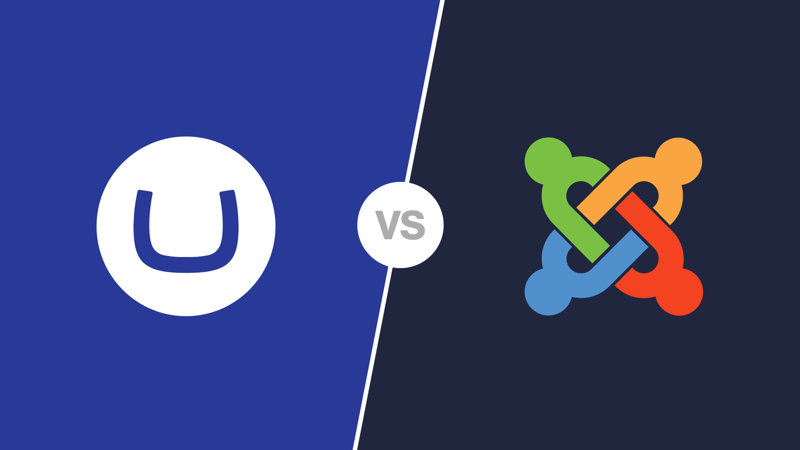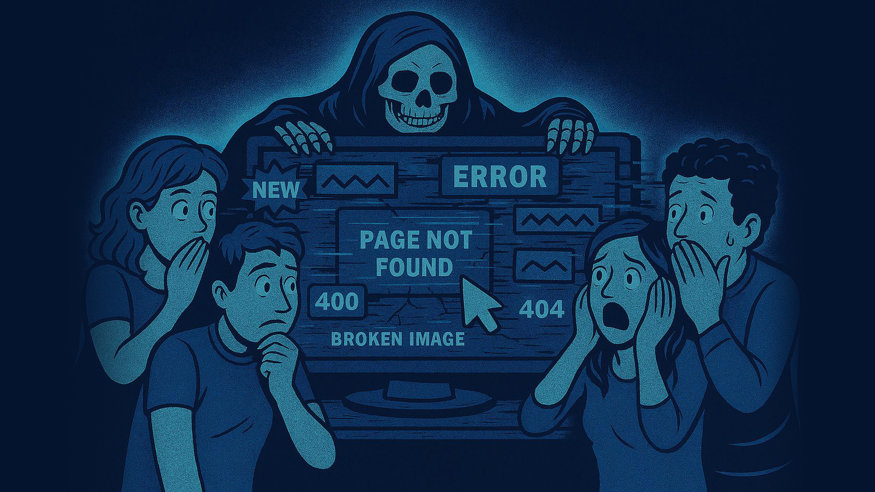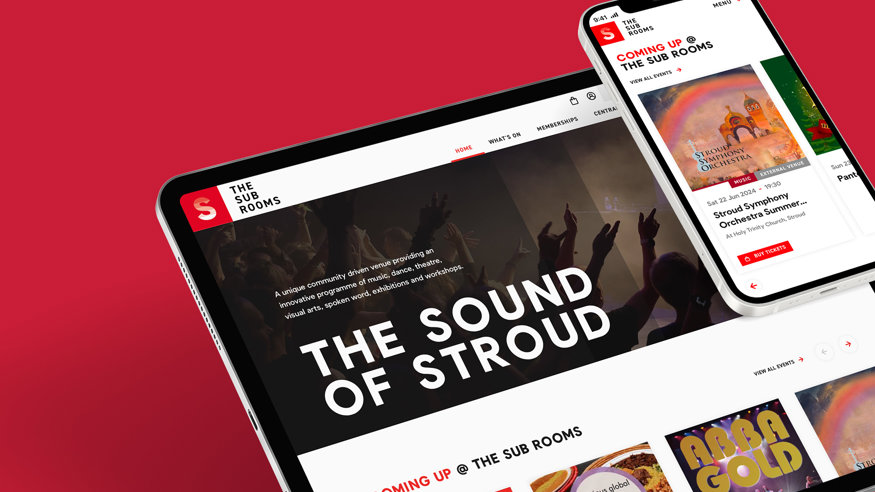Umbraco vs Joomla: why Umbraco stands out for modern web development

Selecting the right content management system (CMS) for your website can be overwhelming, with several options available.
Among the leaders, Umbraco and Joomla both have solid reputations and large user bases, with this comparison looking at the capabilities of each.
Overview: what is Umbraco?
Umbraco is an open-source CMS built on Microsoft’s .NET platform, popular with digital agencies, enterprise teams and organisations looking for custom solutions.
Designed to be developer-first, it allows full control over the structure, design, and functionality of your site or app, whilst providing a clean, modular architecture and modern back-office user interface (UI).
Key features:
Built on .NET (C#)
Fully customisable content models
Razor/MVC templating
User-friendly back office
Strong security and scalability
Versatile hosting options
Umbraco’s motto: “The Friendly CMS,” reflects its commitment to both developer experience and editor usability.
Overview: what is Joomla?
Established in 2005, Joomla is an open-source CMS built in PHP which powers millions of websites globally. Known for its wide range of extensions, it strikes a balance between ease of use and flexibility, offering a middle ground between simple blogging platforms like WordPress and more developer-centric CMSs.
Key features:
PHP-based
Integrated multilingual capabilities without third-party plugins
Modular content architecture
Wide range of extensions
Multilingual support out of the box
Active global community
Joomla has a loyal following and is especially appealing for users comfortable with PHP who want more control than WordPress, without diving into fully custom development. It also has integrated multilingual capabilities enabling users to create and manage content in multiple languages from the start.
Umbraco vs. Joomla
Technology stack and development flexibility
Built on the Microsoft .NET platform, Umbraco is a natural fit for organisations already using Microsoft technologies. It offers a clean, object-oriented codebase that appeals to developers looking for a robust and flexible system, whilst its API-first design and support for Razor templating and MVC architecture give developers full control over how websites function and render.
Joomla, on the other hand, is built with PHP and uses a more rigid templating system which, while customisable, can be more limiting compared to Umbraco’s developer freedom.
User experience and interface
One of Umbraco’s strongest features is its modern, intuitive back office - providing content editors and marketers with a clean and easy way to manage content, alongside the ability to create custom workflows, and preview content before publishing.
In comparison, Joomla’s admin interface, while powerful, can feel cluttered and dated with new users often facing a steep learning curve due to simple content updates being unnecessarily complex.
Multilingual support
One of the key strengths of Umbraco is its flexible and developer-friendly approach to multilingual content, which ensures developers and editors have full control over how the site(s) and subsequent content is structured and managed. For those using Umbraco, setting up multilingual sites is further streamlined with built-in tools that simplify language configuration and deployment workflows, making Umbraco an excellent choice for custom multilingual solutions tailored to specific project needs.
Joomla, by contrast, offers built-in multilingual capabilities out of the box, including language packs, content associations, and translation workflows that don’t require third-party tools. That said, and whilst advantageous for smaller or rapidly-deployed projects this does offer fewer customisation options for complex or unique requirements, especially when compared to Umbraco’s extensible architecture.
Customisation and extensibility
Often referred to as the “CMS that doesn’t get in your way”, Umbraco provides a solid core for developers to build exactly what they need—without being forced into pre-made structures or templates; whilst the flexibility to create tailored content models, custom editors, and integrate with external systems is a major advantage.
In comparison, and whilst Joomla does provide a wide range of extensions and plugins, its ecosystem is less focused on developers, the plugins often conflict with one another, and long-term maintenance can be difficult.
Performance and scalability
Built on .NET, Umbraco benefits from enterprise-grade performance and security, and scales effortlessly—from small marketing sites to global, multi-language platforms with millions of users; whilst Azure and other cloud hosting options provide easy deployment, load balancing, and CI/CD pipelines.
Joomla on the other hand can perform well with proper configuration but scaling large or complex sites often involves third-party solutions or heavy customisation.
Security and maintenance
Security is a top priority for any CMS, and Umbraco’s use of .NET and regular updates make it a secure choice, with its active community and transparent release cycle ensuring vulnerabilities are patched quickly.
Joomla has certainly made strides in security, but its plugin ecosystem and PHP base can increase exposure to risks if not carefully maintained.
Community and support
Umbraco’s community, often dubbed the “Umbraco family,” is known for being welcoming, supportive, and highly professional. Enterprise-grade support plans are also offered by Umbraco, alongside official documentation, and a partner ecosystem for development help.
Joomla has a large global community as well; however, its support experience can vary widely depending on the issue or plugin in question.
Conclusion
Both Umbraco and Joomla offer powerful tools for building and managing websites and each has its strengths depending on the needs and technical preferences of the organisation.
Joomla provides a well-rounded, open-source solution with a long-standing user base, particularly for those familiar with PHP and looking for a modular CMS with out-of-the-box multilingual capabilities. However, when considering long-term scalability, development flexibility, editor usability, and enterprise readiness, Umbraco is a clear winner. Its foundation on .NET, modern content editing interface, clean architecture, and strong community support make it particularly well-suited for organisations seeking a customisable and future-proof CMS.
Interested in hearing more?
Need help deciding between Umbraco and Joomla for your business? Get in touch with the 16i team.
Share article:

2025 16i Christmas opening hours
Please note our hours will be slightly different during the holidays.
Read more
SGGBA 2025: Winners revealed
Congratulations to the winners of the SoGlos Business Awards 2025! Find out who they are!
Read more
Upgrading to Umbraco 17: a strategic investment for your business
Used and trusted by both developers and marketers, Umbraco offers a high level of customisability, with the latest long-term-supported (LTS) version (Umbraco 17) currently scheduled for release in November 2025. Featuring improved performance and developer tooling, alongside support for the latest .NET versions, Umbraco 17 offers a number of benefits including enhanced security, streamlined workflows, and improved scalability.
Read more
How to avoid website project horror stories!
Maybe you've been there before, maybe this is your first time creating a website. We have seen website projects at all stages turn from dreams into nightmares very easily, often being the ones at the other end helping our soon to be clients put it back on the right path.
Read more
Exploring the benefits of Umbraco 17: a leap forward in CMS flexibility and performance
Umbraco has long held the reputation as a flexible, developer‑friendly content management system (CMS) and with the release of Umbraco 17 scheduled for November 2025, the platform is continuing to evolve. Umbraco 17 will be the next Long‑Term Support (LTS) version, aligned with the upcoming .NET 10 LTS release, and is expected to include enhancements in performance, developer experience, and content workflow modernisation.
Read more
The future is bright for the Sub Rooms
New website and Spektrix integration helped Sub Rooms turn a corner
Read more
Website builders vs bespoke: which is right for your business?
In a digital-first world, a company’s website (and its overall effectiveness) is of paramount importance, serving as both the first impression and initial introduction to a brand. Traditionally built from the ground up by experienced developers, website creation has become increasingly accessible, primarily due to the rise of website builders such as Squarespace, Wix, Weebly, and Webflow, These platforms offer powerful tools, sleek templates, and rapid setup options, without the need for direct developer involvement. However, for businesses with more complex or unique requirements, they can be limiting, with many instead opting for bespoke development tailored to the specific project goals, workflows, and user experience. This blog outlines the pros and cons of each –off-the-shelf website builders vs bespoke development.
Read more
How to spot a text message, iMessage or WhatsApp scam
Top 6 red flags for suspicious text messages
Read more